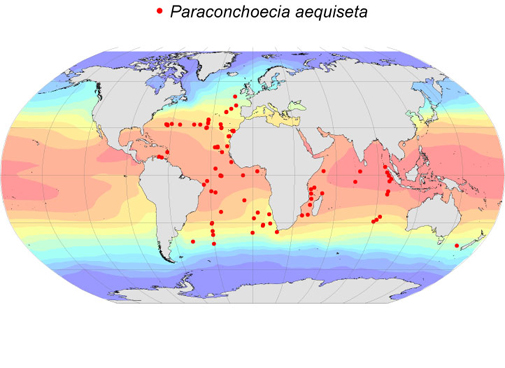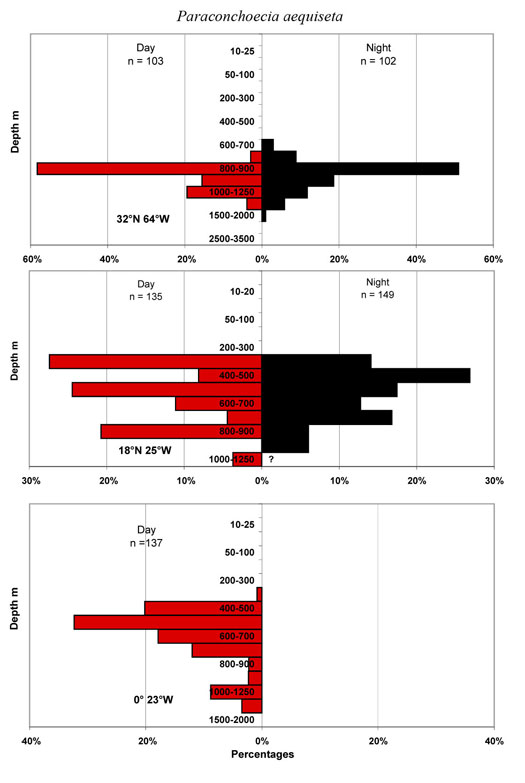Atlas of Atlantic Ostracods
Taxon details
Paraconchoecia aequiseta (Müller, G.W., 1906)
- Order:
- MYODOCOPA
- Suborder:
- Halocypridina
- Family:
- Halocyprididae
- Subfamily:
- Conchoecinae
- Size range (females):
- 2.9-3.3 mm
- Size range (males):
- 2.5-2.8 mm
- Depth:
- mesopelagic
Notes
177 records
This is a large species that characteristically has two spines at the posterior dorsal corner on the right valve, the RAG opens nearly half way up the posterior margin, and the LAG opening some way anterior to the posterior hinge. Its latitudinal range is 30°N to 44°S. However, it is almost identical to P. hirsuta and as yet, there is no certain way of distinguishing between the females of the two species, if indeed they are separate species. Males are distinguished on the basis of a single character the presence (P. hirsuta) or absence (P. aequiseta) of long hairs on the b seta of the endopodite of the second antenna. Males of P. aequiseta are most common in the North Atlantic, whereas P. hirsuta appears to be the commoner in the South Atlantic. Until these two species are re-examined critically, records of either species that are not of males must be regarded as uncertain. The bathymetric profiles show that aequiseta is a deep mesopelagic species at 32°N in the Sargasso Sea, but occurs shallower in the eastern Atlantic – indicative of a taxonomic problem?
| Bermuda | n | Mean mm | s.d. | Range mm |
|---|---|---|---|---|
| Female | 19 | 3.027 | 0.041 | 2.96-3.12 |
| Male | 13 | 2.606 | 0.086 | 2.48-2.80 |
| A-1 | 63 | 2.130 | 0.049 | 2.04-2.24 |
| A-2 | 38 | 1.474 | 0.031 | 1.36-1.56 |
| A-3 | 60 | 1.029 | 0.040 | 0.94-1.08 |
| A-4 | 9 | 0.798 | 0.052 | 0.74-0.88 |
| Equator | n | Mean mm | s.d. | Range mm |
|---|---|---|---|---|
| Female | 13 | 3.200 | 0.089 | 3.04-3.32 |
| Male | n.d. | |||
| A-1 | 25 | 2.214 | 0.053 | 2.10-2.30 |
| A-2 | 4 | 1.38-1.50 | ||
| A-3 | 12 | 1.052 | 0.024 | 1.02-1.10 |





